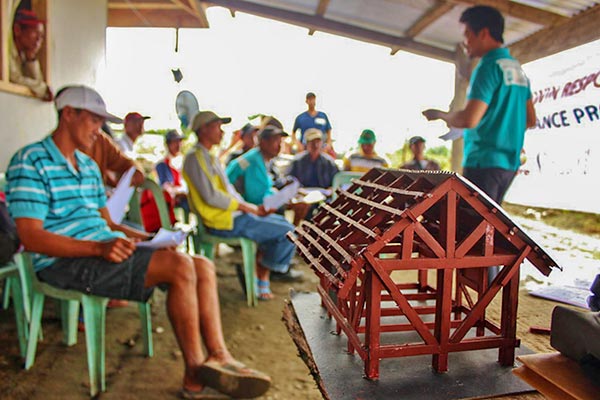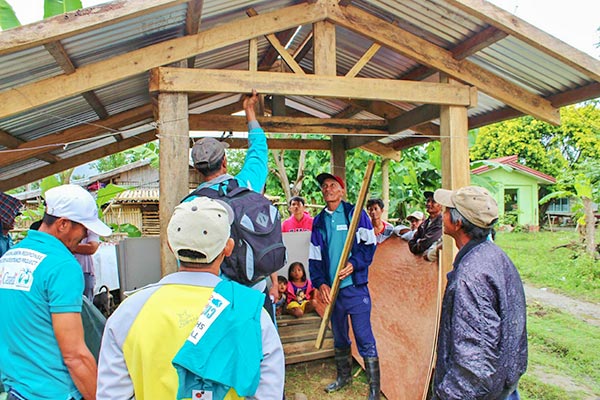
Jocelyn Ancheta now lives in a new home in a safer location. Photo: CARE
Building stronger houses after the storm
When typhoon season approaches the Philippines, most people living in rural areas start worrying. In the remote and agriculture-dependent village of Balagan, the people now have a different response.
While the strength of typhoons continues to intensify because of climate change, residents of Balagan know that appropriate preparation is essential to minimize the impact of disasters. The village is prone to flash floods because of its proximity to the Cagayan River, the longest and widest river in the country. It was severely hit by Typhoon Haima (locally known as Lawin) in October 2016, damaging rice fields and destroying houses.
“It was the strongest typhoon we’d experienced! My house wasn’t even spared and I wasn’t able to save my belongings,” shared Jocelyn Ancheta, a 48-year-old farmer who completely lost her house after the raging waters of Cagayan River swept it away.
“Life after the typhoon was extremely tough. We were about to harvest and we couldn’t help but witness how the destructive typhoon took our livelihoods away in a snap,” she said.
CARE, in partnership with Cagayan Valley Disaster Response Center (CVDRC), immediately responded to the needs of the affected people in six remote villages in Santo Nino, including Balagan. Thanks to financial support from the Canadian Humanitarian Assistance Fund, CARE provided cash assistance (CAD $128 per household) to be used for both construction labor and procurement of necessary repair materials.
CARE also conducted “Build back safer” sessions with local carpenters and members of the community to help them build disaster-resilient houses.
CARE and CVDRC also organized a “Shelter Roving Team” composed of a community mobilizer and two trained carpenters to check the progress of repairs and construction works in the community.

Carpenters and roving team members attend Build Back Safer session from CARE & CVDRC. Photo: CARE

Local carpenters apply the BBS techniques in a damaged house. Photo: CARE Canada
“We visited the houses daily to check if they (the project participants) were able to apply the build back safer principles. Some households were able to build less than a month after the typhoon,” said Jocel Ramos, a roving team member.
Jocelyn decided to build a new house in a much safer location after attending the sessions. She learned about techniques and jointly worked with her husband to ensure that these were applied in their new house.
“Now I feel more comfortable in our new house. I can sleep soundly every night. Whenever we experience strong rains, I am more self-assured that this house will be able to withstand,” shared Jocelyn